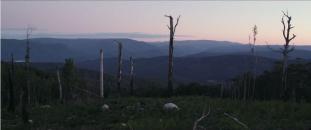AustLit
Latest Issues
AbstractHistoryArchive Description
Publication Details of Only Known VersionEarliest 2 Known Versions of
Works about this Work
-
Carving Out an Australian Sensory Cinema
2018
single work
criticism
— Appears in: Australian Screen in the 2000s 2018; (p. 261-283) Examines a set of films that ground narrative-based stories in tactile experiences. -
Theorising Film Festivals as Distributors and Investigating the Post-Festival Distribution of Australian Films
2017
single work
criticism
— Appears in: Studies in Australasian Cinema , vol. 11 no. 2 2017; (p. 46-58)This paper theorises film festivals as distribution circuits, positioning film festivals in the broader cinema ecology to assess their role in delivering local films to local audiences. Recasting current research trends into film festivals through the lens of distribution enables us to see how festivals function as more than another exhibition screen - as a type of distributor. I offer a case study of Sydney Film Festival to explore the following research questions: What is the distributive function and nature of film festivals for Australian films? What happens to local titles following their festival runs? How can we explain the gap between Australian films' continued popularity at film festivals and their continued under-performance in the rest of the marketplace? In answering these questions, this article demonstrates how film festivals have become crucial to both the Australian film industry and the cinema industry at large over the last 10 years, to the point that they have almost replaced the art-house circuit and come to provide an essential, highly specialised distribution channel for small to medium budget films. For this reason, I argue that material and economic drivers are as essential to the current boon in film festivals as cultural ones, and that the film festival circuit has not been able to address the problem of distribution for auteurist, independent and art cinema in an age of digitisation. I present evidence that localises, concretises and specifies festival research, suggesting the major festivals in Australia are an increasingly discrete and self-contained distribution sector within the wider cinema ecology, which has significant implications for theorisations of festivals as feeders for theatrical circuits.
-
Comedians and Physicists Take on Film Festival
2014
single work
column
— Appears in: The Sydney Morning Herald , 8 May 2014; (p. 10-11)
-
Comedians and Physicists Take on Film Festival
2014
single work
column
— Appears in: The Sydney Morning Herald , 8 May 2014; (p. 10-11) -
Theorising Film Festivals as Distributors and Investigating the Post-Festival Distribution of Australian Films
2017
single work
criticism
— Appears in: Studies in Australasian Cinema , vol. 11 no. 2 2017; (p. 46-58)This paper theorises film festivals as distribution circuits, positioning film festivals in the broader cinema ecology to assess their role in delivering local films to local audiences. Recasting current research trends into film festivals through the lens of distribution enables us to see how festivals function as more than another exhibition screen - as a type of distributor. I offer a case study of Sydney Film Festival to explore the following research questions: What is the distributive function and nature of film festivals for Australian films? What happens to local titles following their festival runs? How can we explain the gap between Australian films' continued popularity at film festivals and their continued under-performance in the rest of the marketplace? In answering these questions, this article demonstrates how film festivals have become crucial to both the Australian film industry and the cinema industry at large over the last 10 years, to the point that they have almost replaced the art-house circuit and come to provide an essential, highly specialised distribution channel for small to medium budget films. For this reason, I argue that material and economic drivers are as essential to the current boon in film festivals as cultural ones, and that the film festival circuit has not been able to address the problem of distribution for auteurist, independent and art cinema in an age of digitisation. I present evidence that localises, concretises and specifies festival research, suggesting the major festivals in Australia are an increasingly discrete and self-contained distribution sector within the wider cinema ecology, which has significant implications for theorisations of festivals as feeders for theatrical circuits.
-
Carving Out an Australian Sensory Cinema
2018
single work
criticism
— Appears in: Australian Screen in the 2000s 2018; (p. 261-283) Examines a set of films that ground narrative-based stories in tactile experiences.





